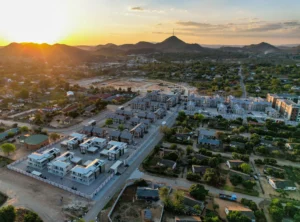In Zimbabwe’s evolving architectural landscape, the integration of sustainable practices is no longer a luxury, but a necessity. As we strive to create buildings that are both aesthetically pleasing and environmentally responsible, attention to detail becomes paramount. Even seemingly minor architectural elements, like balustrades, can play a significant role in achieving sustainability goals.
Traditionally, balustrades have served primarily as safety features, preventing falls from balconies, staircases, and terraces. However, with innovative design and material choices, they can contribute to energy efficiency, natural ventilation, and the overall ecological footprint of a building.
One crucial aspect is the selection of materials. In Zimbabwe, where we have an abundance of natural resources, exploring sustainable alternatives is vital. Locally sourced timber, particularly from sustainably managed forests, can offer a beautiful and eco-friendly option. When treated and maintained correctly, Zimbabwean hardwoods like teak can provide durable and long-lasting balustrades.
Furthermore, the rising popularity of recycled materials presents a compelling opportunity. Recycled steel, for instance, can be fashioned into sleek, modern balustrades, minimizing waste and reducing the demand for virgin resources. Additionally, incorporating composite materials that blend recycled plastics with natural fibres can provide robust and weather-resistant solutions, ideal for Zimbabwe’s variable climate.
Beyond material choices, the design of balustrades can significantly impact a building’s energy efficiency. Properly designed balustrades can provide shading, reducing solar heat gain and the need for excessive air conditioning. This is particularly relevant in Zimbabwe’s warm climate, where cooling costs can be substantial.
Furthermore, balustrades can be designed to enhance natural ventilation. When balustrades incorporate openwork patterns or strategically placed openings, they can facilitate airflow, promoting passive cooling and improving indoor air quality. This is especially important in densely populated urban areas like Harare and Bulawayo, where air pollution can be a concern.
Moreover, the integration of photovoltaic balustrade systems, which employ solar panels within the balustrade structure, represent an innovative way to generate clean energy. This technology is becoming more accessible, and it can help buildings in Zimbabwe reduce their reliance on the national grid, contributing to energy independence and lower carbon emissions.
In the Zimbabwean context, where economic and environmental challenges are intertwined, sustainable building practices are crucial. Embracing innovative balustrade designs and materials, allows the creation of buildings that are not only safe and visually appealing but also environmentally responsible.
As we move forward, it is vital that architects, builders, and homeowners prioritize sustainability, ensuring that our built environment contributes to a greener and more prosperous future for Zimbabwe.









